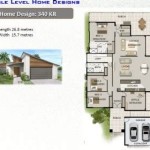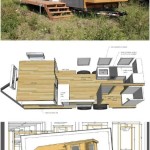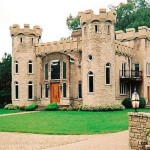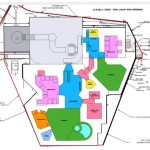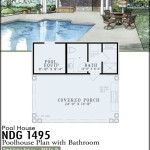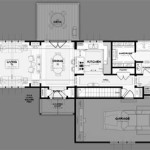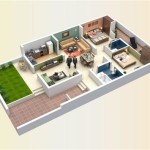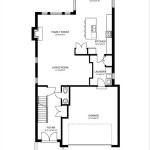Eastern Bluebird House Plans: Providing Shelter for a Native Species
The Eastern Bluebird (Sialia sialis) is a beloved songbird native to North America. Its vibrant blue plumage and cheerful song contribute significantly to the aesthetic and ecological value of suburban and rural landscapes. However, bluebird populations experienced significant declines throughout much of the 20th century, primarily due to habitat loss and competition with introduced species such as the European Starling and House Sparrow. One of the most effective methods for supporting bluebird populations is providing suitable nesting cavities through the construction and placement of bluebird houses.
Bluebird houses, specifically designed to meet the needs of these birds, create safe and secure nesting locations where they can raise their young. Properly constructed and maintained bluebird houses can significantly improve the breeding success of bluebirds in areas where natural nesting cavities are scarce. The provision of artificial nesting sites directly addresses the limited availability of suitable habitat, a primary factor in the historical decline of bluebird populations. This article details key considerations for constructing effective bluebird houses, including design specifications, materials, placement guidelines, and maintenance practices. These elements are crucial for maximizing the success rate of bluebird nesting attempts and contributing to the overall health of bluebird populations.
Key Considerations for Bluebird House Design
The design of a bluebird house is paramount to its effectiveness in attracting bluebirds and providing a safe and suitable nesting environment. Several factors influence the suitability of a bluebird house, including the size of the entrance hole, internal dimensions, ventilation, drainage, and protection from predators. Adhering to specific design recommendations is crucial for maximizing the likelihood of bluebird occupancy and successful fledging of young.
The entrance hole size is perhaps the most critical aspect of bluebird house design. The ideal diameter for the entrance hole is 1.5 inches. This size effectively prevents larger birds, such as European Starlings, from entering the house, while still allowing bluebirds easy access. A hole diameter smaller than 1.5 inches might deter bluebirds, while a larger hole will invite unwanted competition. The entrance hole should be located at the appropriate height above the floor of the box, generally between 6 and 8 inches from the floor. This placement prevents young birds from prematurely exiting the nest before they are ready to fledge.
The internal dimensions of the bluebird house also play a vital role in its suitability. The floor of the house should be approximately 5 inches by 5 inches, and the height from the floor to the roof should be between 8 and 10 inches. These dimensions provide sufficient space for the bluebird nest and allow the adult birds to move comfortably within the box. A shallower box might be inadequate for nest building, while a larger box might invite other species to nest instead.
Proper ventilation and drainage are essential for maintaining a healthy nesting environment. Drill ventilation holes near the top of the side walls to allow for air circulation, which helps to regulate the temperature inside the box and prevent overheating, especially during hot weather. Drainage holes should be drilled in the floor of the box to allow rainwater to escape, preventing the nest from becoming waterlogged. These features are crucial for reducing the risk of nest failure due to temperature extremes or excessive moisture.
Protection from predators is another critical consideration in bluebird house design. Several methods can be employed to deter predators, such as mounting the house on a smooth metal pole to prevent climbing. A predator guard, consisting of a metal or plastic cone-shaped baffle, can be installed below the house to further inhibit access by snakes, raccoons, and other predators. Overhanging roofs can offer some protection from rain and also make it more difficult for predators to reach into the entrance hole. Careful attention to predator deterrence measures is essential for maximizing the survival rate of bluebird nestlings.
Recommended Materials and Construction Techniques
The choice of materials and construction techniques significantly impacts the durability and suitability of a bluebird house. Natural, untreated wood is the preferred material for construction, as it provides a safe and non-toxic environment for the birds. Avoid using treated lumber, as the chemicals used in the treatment process can be harmful to bluebirds. The ideal wood species include cedar, redwood, and pine, as they are durable, weather-resistant, and relatively easy to work with.
Cedar is an excellent choice due to its natural resistance to rot and insects. Redwood also offers similar benefits, although it may be more expensive in some regions. Pine is a more affordable option, but it may require more frequent maintenance to prevent deterioration. Regardless of the wood species chosen, it is crucial to use untreated lumber to avoid exposing the bluebirds to harmful chemicals. Exterior grade plywood can be used for the roof if properly sealed and painted with a light-colored, non-toxic paint to reflect sunlight and prevent overheating.
Construction techniques should focus on creating a sturdy and weather-resistant structure. Use screws instead of nails to assemble the house, as screws provide a stronger and more durable connection. Ensure that all joints are tight and secure to prevent water from entering the box. The roof should be slightly sloped to allow rainwater to run off easily. It is advisable to use a hinged roof or a side that can be easily opened for cleaning and monitoring the nest. Secure the hinged roof or side with screws or latches to prevent it from being accidentally opened by wind or predators.
Avoid adding perches or dowels below the entrance hole, as these can actually assist predators in gaining access to the box. Bluebirds do not need perches to enter the house, and adding them only increases the risk of predation. The interior of the box should be left rough to allow the fledglings to easily climb out when they are ready to leave the nest. Avoid painting the interior of the box, as the paint can be toxic to the birds.
Optimal Placement and Maintenance Practices
The placement of a bluebird house is critical for attracting bluebirds and maximizing their nesting success. Bluebirds prefer open habitats with scattered trees and shrubs, such as meadows, pastures, and orchards. Avoid placing bluebird houses in dense forests or areas with heavy undergrowth, as these habitats are less attractive to bluebirds. Choose a location that is relatively free from human disturbance and protected from strong winds.
Mount the bluebird house on a sturdy pole, preferably made of metal, at a height of approximately 5 to 6 feet above the ground. This height provides adequate protection from ground predators and allows the bluebirds to easily access the house. Place the house facing away from prevailing winds and direct sunlight, ideally facing east or southeast. This orientation provides protection from the afternoon sun and helps to regulate the temperature inside the box.
Spacing between bluebird houses is also an important consideration. Bluebirds are territorial birds, and they typically require a certain amount of space between nesting sites. A general guideline is to space bluebird houses at least 100 yards apart in open habitats. In areas with limited space, the houses can be placed closer together, but it is important to monitor the houses regularly to ensure that bluebirds are not being harassed by other birds. If multiple bluebird houses are placed in close proximity, it may be necessary to use different entrance hole sizes or shapes to reduce competition between species.
Regular maintenance is essential for ensuring the continued suitability of bluebird houses. The houses should be cleaned out after each nesting season, typically in late summer or early fall, to remove old nests and debris. This helps to prevent the buildup of parasites and diseases and encourages bluebirds to return to the house in subsequent years. Wear gloves and a mask when cleaning out bluebird houses to protect yourself from potential health hazards. Inspect the house for any damage and make necessary repairs, such as replacing cracked boards or tightening loose screws.
Monitor the bluebird houses regularly throughout the nesting season to observe the progress of the nesting attempts and identify any problems, such as predation or competition from other species. Remove any nests built by non-native species, such as House Sparrows, as they can be aggressive and displace bluebirds. Keep a record of the nesting activity, including the number of eggs laid, the number of young hatched, and the number of young fledged. This information can be valuable for assessing the success of the bluebird house program and making adjustments to improve its effectiveness.
By carefully considering the design specifications, materials, placement guidelines, and maintenance practices outlined above, individuals can create effective bluebird houses that contribute to the conservation of this iconic North American songbird. Providing suitable nesting cavities is a simple yet powerful way to support bluebird populations and enhance the biodiversity of suburban and rural landscapes.

Nest Box Plans More Bluebird Recovery Program Of Minnesota

Nest Box Plans More Bluebird Recovery Program Of Minnesota

Nest Box Plans More Bluebird Recovery Program Of Minnesota

Free Bluebird House Plans Multiple Designs

Building Bird Boxes Nc State Extension Publications

How To Build A Bluebird Nest Box Audubon

Mvfn Bluebird Boxes

Bluebird Gracewin Living Of Baxter Active S 55 Mn Trulia

Nest Box Plans

Bulletin 7117 Birdhouse Basics Cooperative Extension Publications University Of Maine

